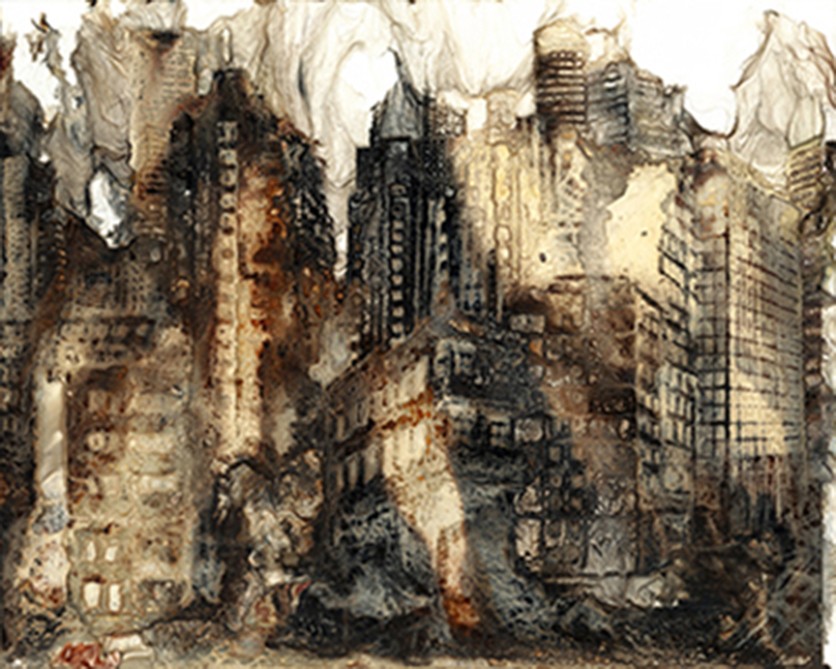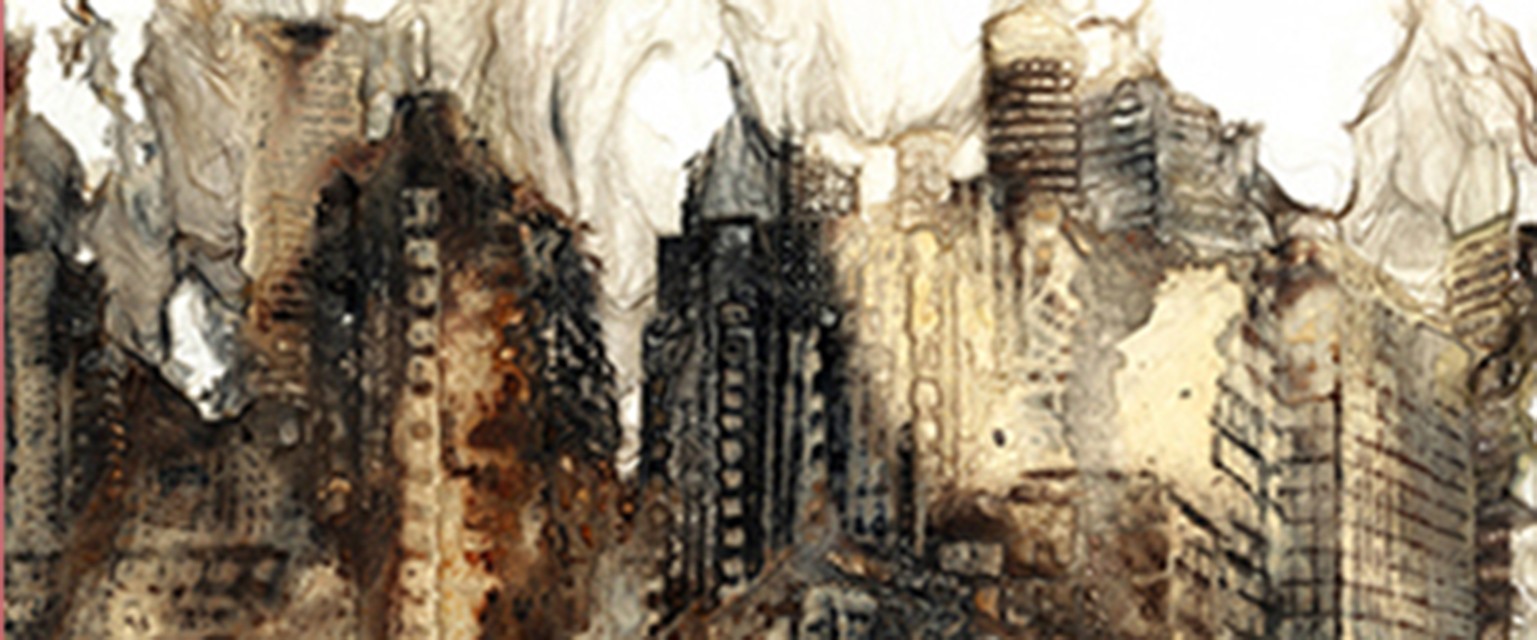Eva Nikolova: The Edifice of Memory
Eva Nikolova: The Edifice of Memory examines the entanglement between geography and memory. In emigrating from Bulgaria to the United States, Nikolova recalls confronting the notion of remembrance as essentially inseparable from that of place. Her experimental depictions of buildings and landforms, in their manifestation of instability and transience, reflect a personal narrative of displacement. This solo exhibition presents a selection of works from her most recent series of cliché-verres 21 Fragments of Yesterday and Tomorrow in addition to the standalone piece Tributaries, a set of chemigrams – cameraless gelatin silver photographs created by drawing and painting onto light-sensitive paper.

Nikolova suggests that “nothing can erase the experience of the past quite like a photograph, which replaces what it purports to preserve.” She insists on drawing from memory in an attempt to capture the subjectivity of a lived experience, employing the cameraless, inkless printmaking technique of cliché-verre. Nikolova sketches a matrix with graphite, white chalk, charcoal, black and white ink, and oil pastel, later transferring the image onto light-sensitive paper to be reworked once again. This matrix, enlarged onto gelatin silver photographic paper and developed in the darkroom, generates the cliché-verre prints. These prints serve as a matrix once more as Nikolova bleach-etches each image to emulsify the metallic chemicals.
In this complex and time-intensive process, Nikolova physically erodes her prints of forgone cities and landscapes in part to reflect her experience as an immigrant faced with personal discontinuities and the monumental task of remembrance. She recalls “the gelatin-silver emulsion, equally a site of creation and dissolution, became the embodiment of the themes of the work – the nature of transformation and the interchangeability of construction and destruction within the unstable and fragmentary edifice of memory itself.”

